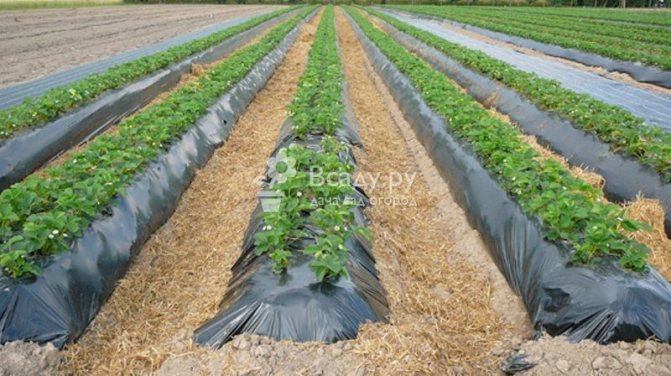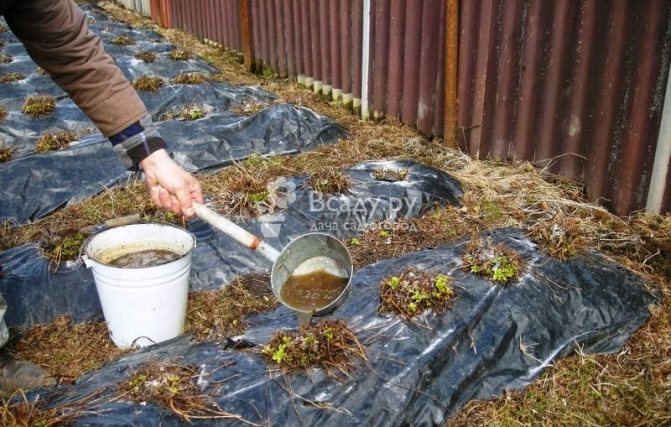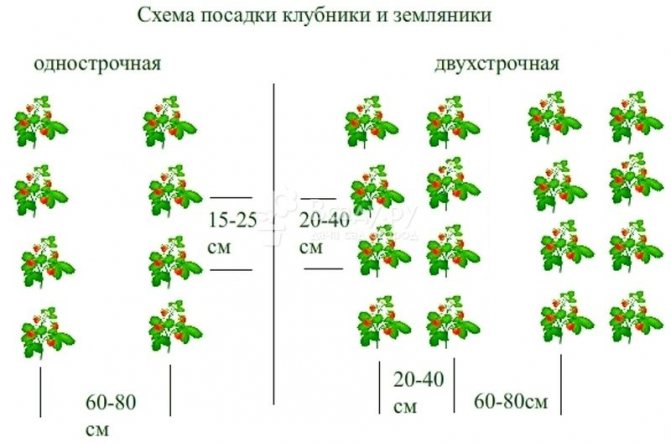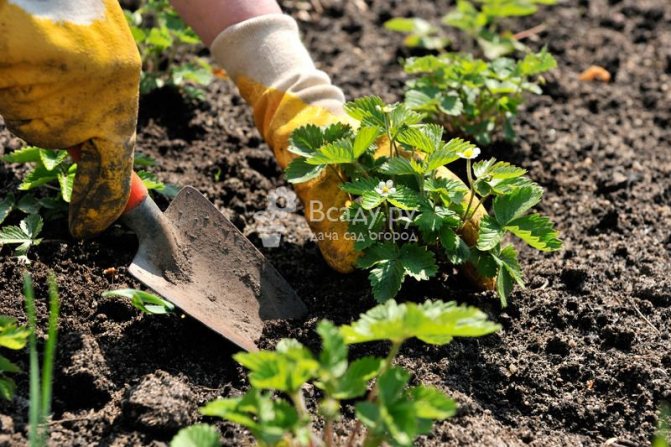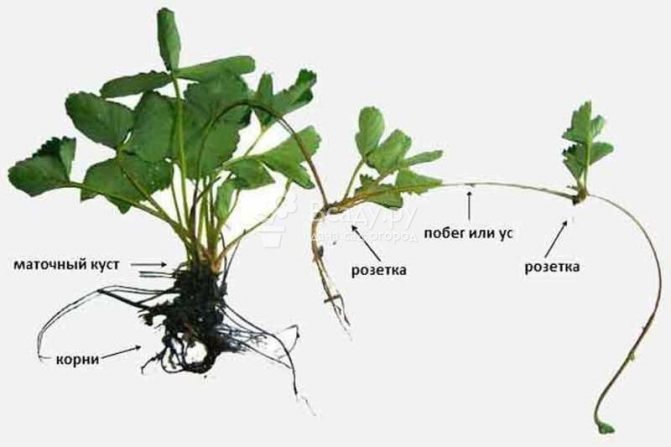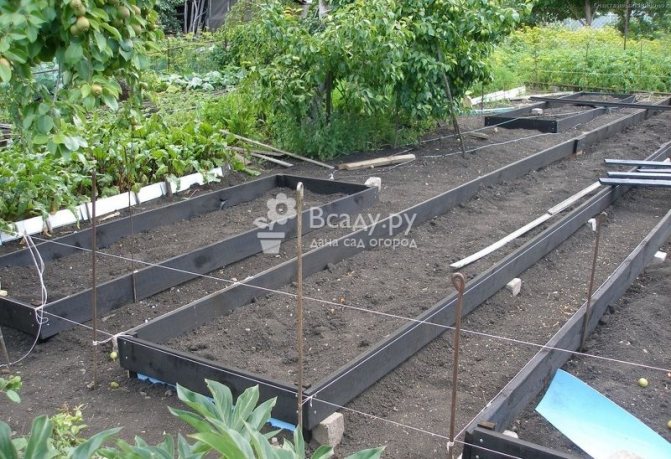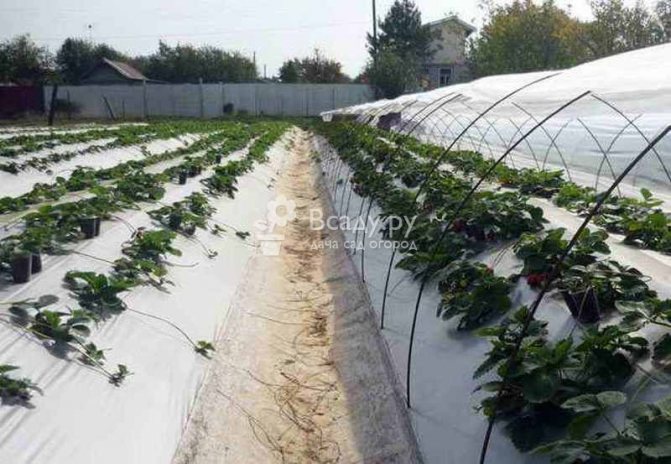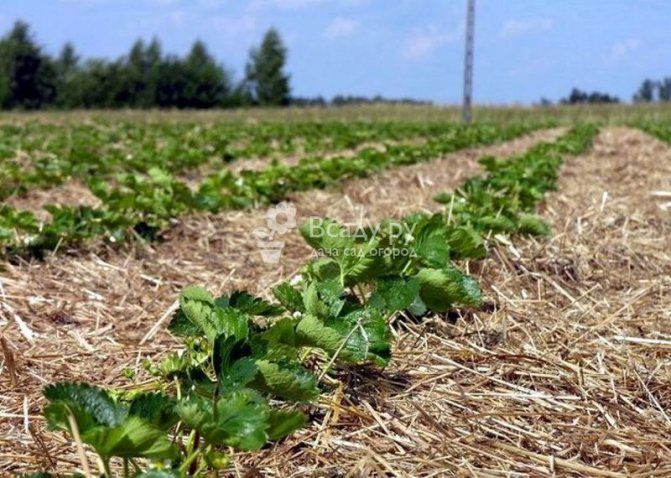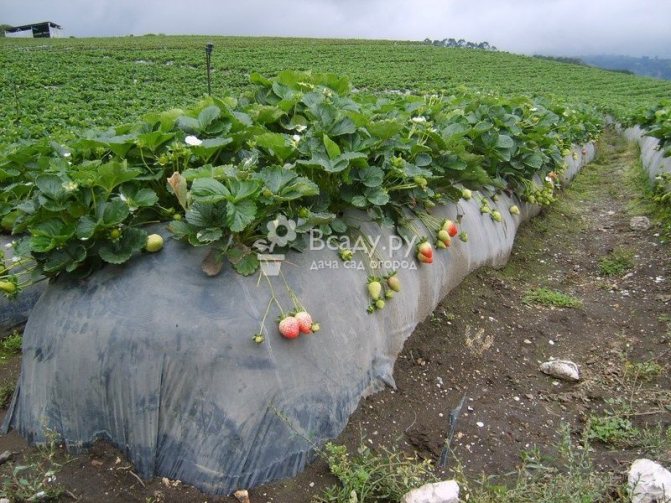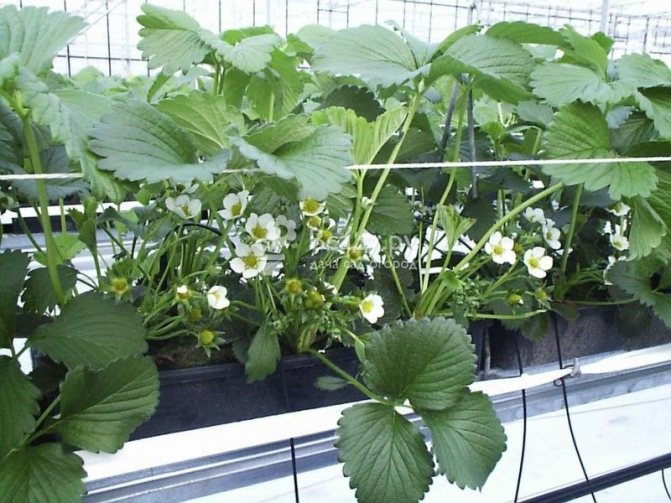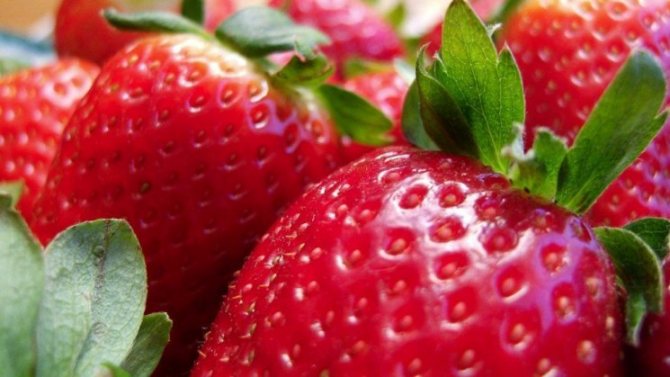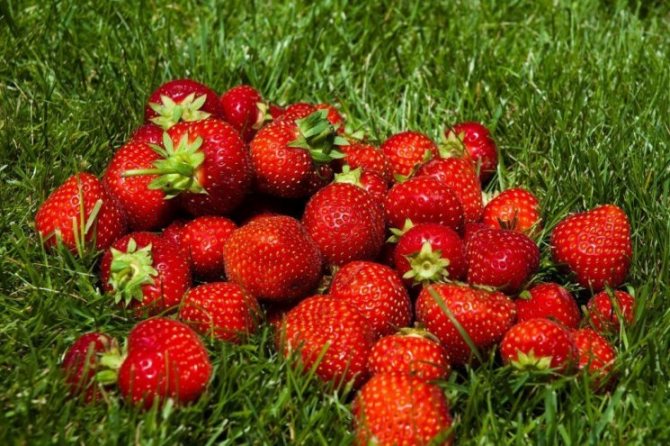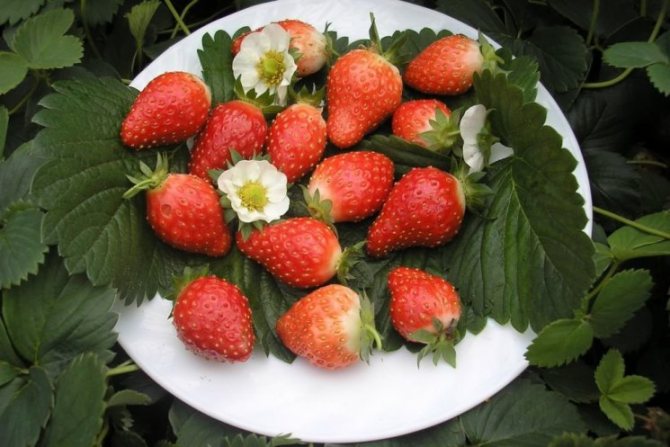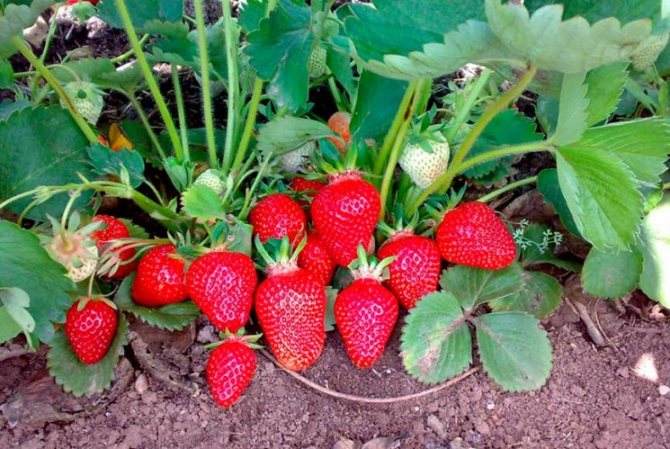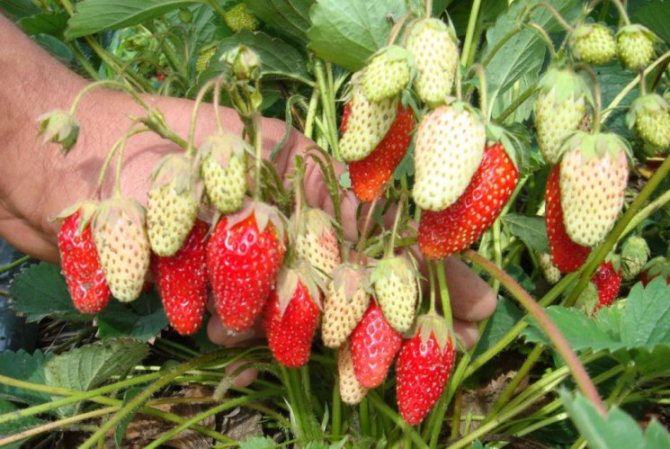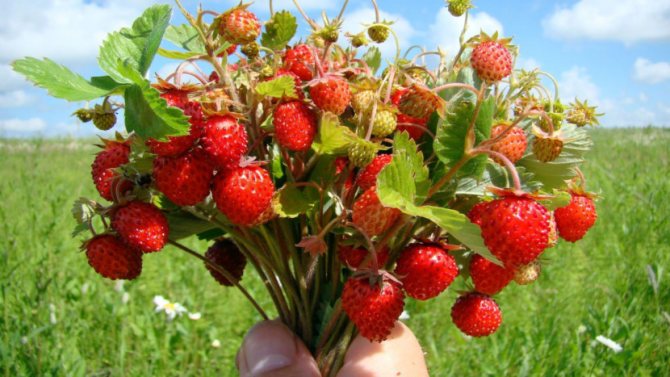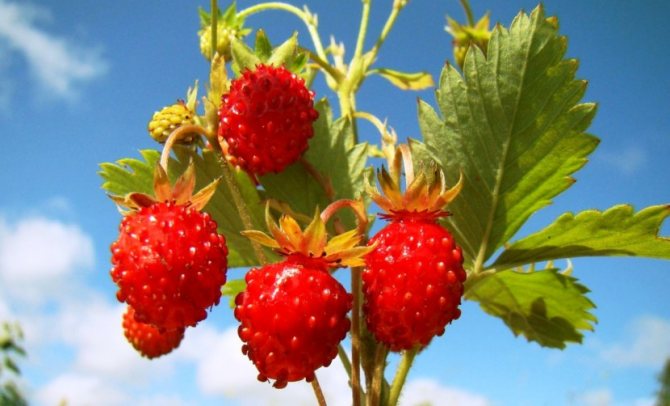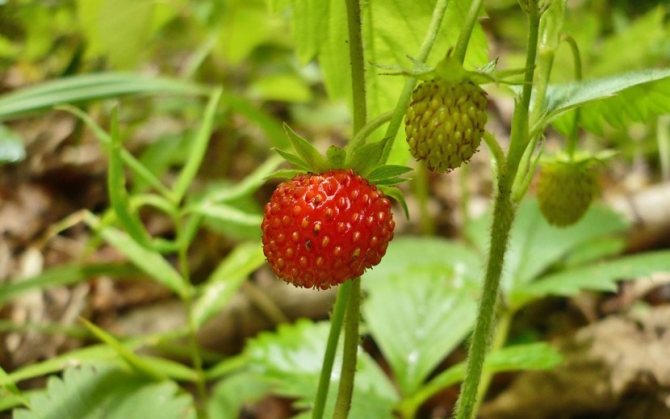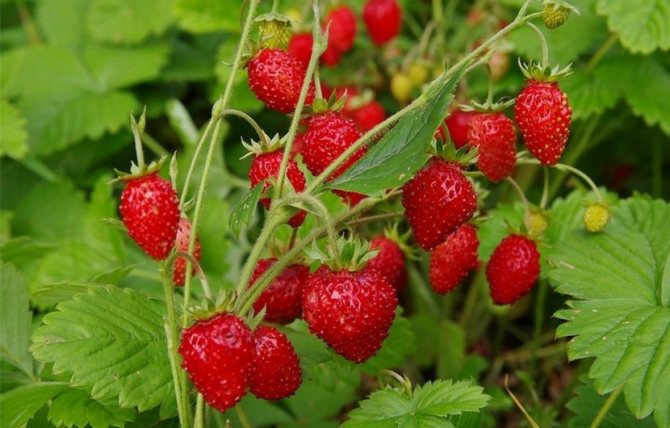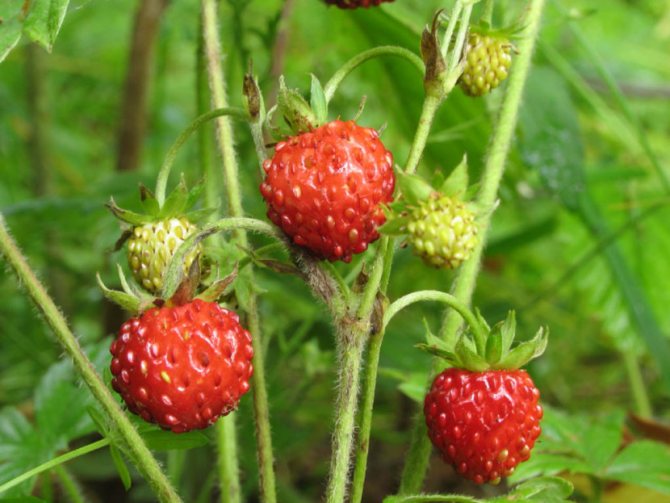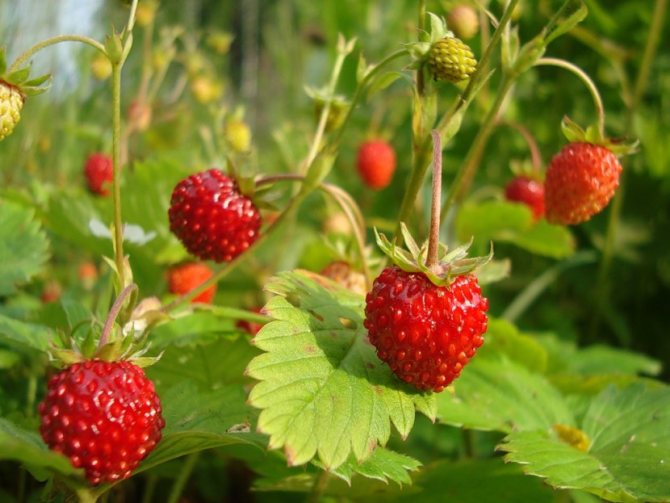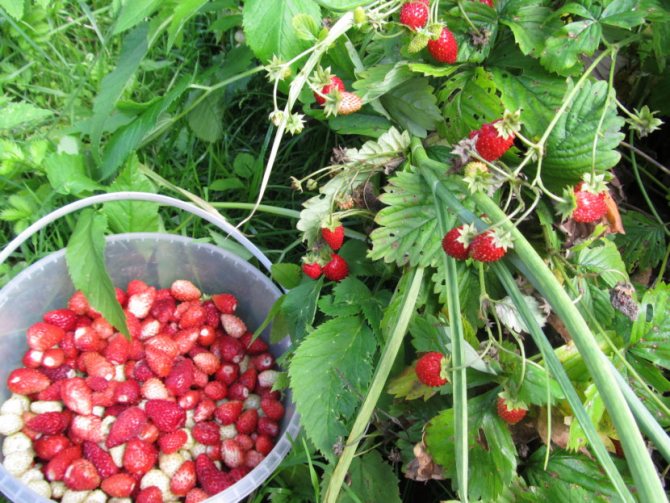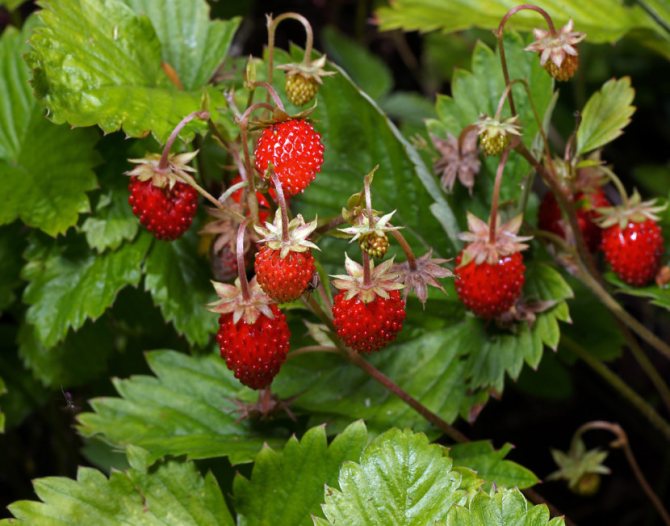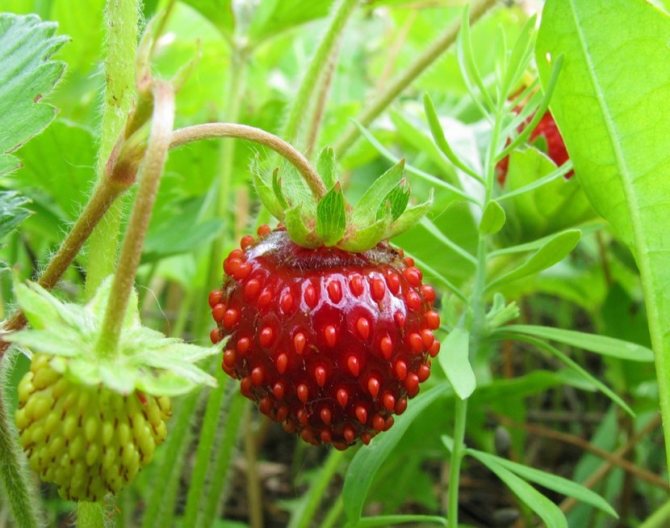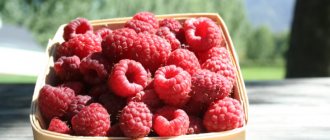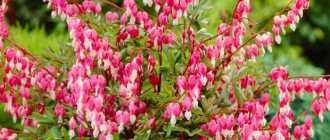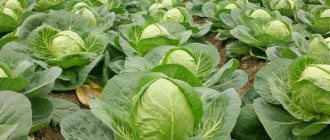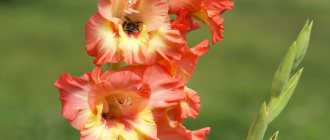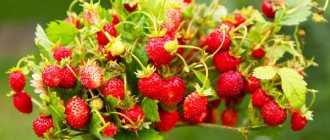In order for the strawberries in the garden to be healthy and fertile, the owner needs to know the intricacies of planting this amazing plant. High-quality selection of varieties, proper care, effective pest and disease control will make strawberries productive. Knowing all the subtleties, you will be able to get even an early harvest of strawberries.
Some gardeners call garden strawberries strawberries. Others believe that she is the large-fruited sister of wild strawberries. Both are wrong.
But, be that as it may, this popular berry culture has firmly established itself in every garden, occupying one of the most worthy places in it!
In the wild, garden strawberries do not exist in nature. It was obtained in Holland in the middle of the 18th century by hybridization of Chilean and Virginia strawberries. Since then, it has become the world's most widely cultivated berry crop. This plant is large-fruited, high-yielding, those are unstable, relatively frost-resistant (depending on the variety). Caring for strawberries does not cause much trouble, and as a result we get tasty, aromatic and very healthy berries, rich in vitamin C. They are used both fresh and frozen, and canned. And what a delicious strawberry jam! So let's find out more about her.
Choosing a plot for strawberries
Growing garden strawberries in the open field means cultivating them in a garden bed that is not even protected by a film cover. This means that planting berries should be ready for spring return frosts, and for a dry summer, and for successful wintering. All this is possible if the bushes are healthy and strong.
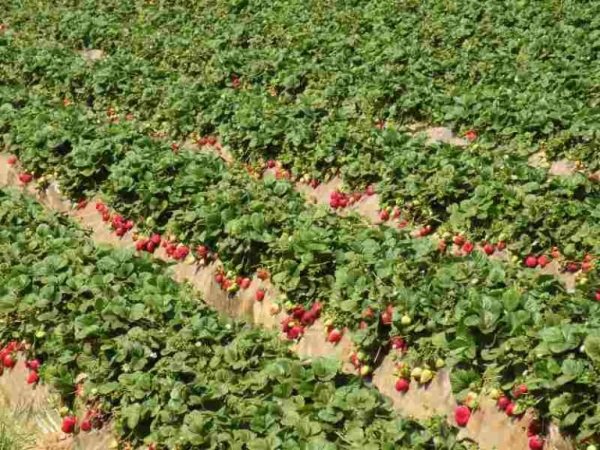
One of the main tasks facing summer residents, who for the first time decided to grow garden strawberries, is the choice of a place for a garden bed and the acquisition of healthy planting material. Let's dwell on the choice of the site. It should be sheltered from the wind and well lit. In winter, it should be covered with snow at least 20-30 cm so that the garden strawberries do not freeze.
The plot is preferable to be flat or with a slight (2-3 °) slope to the south-west. But on the southern slopes, cultivation of strawberries in the open field will be reduced to zero: the snow will melt too early, and the bushes will die from spring frosts.
Lowlands are also not a suitable place for berry planting. Cold air accumulates in them, which slows down the ripening of the crop and leads to the spread of plant diseases.
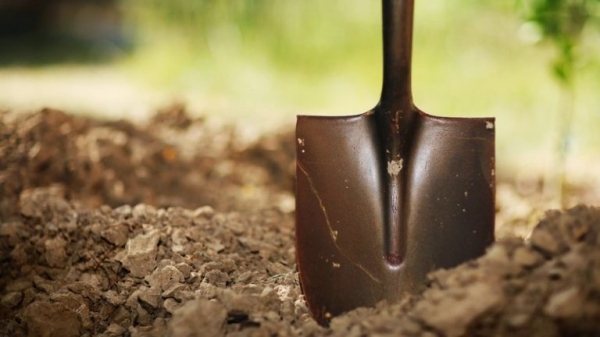

Garden strawberries are not too demanding on the soil, but it has been noticed that it grows and bears fruit better on chernozems fertilized with ash. Peaty soil components and acidic soils (pH> 5.5) are not recommended for growing strawberries.
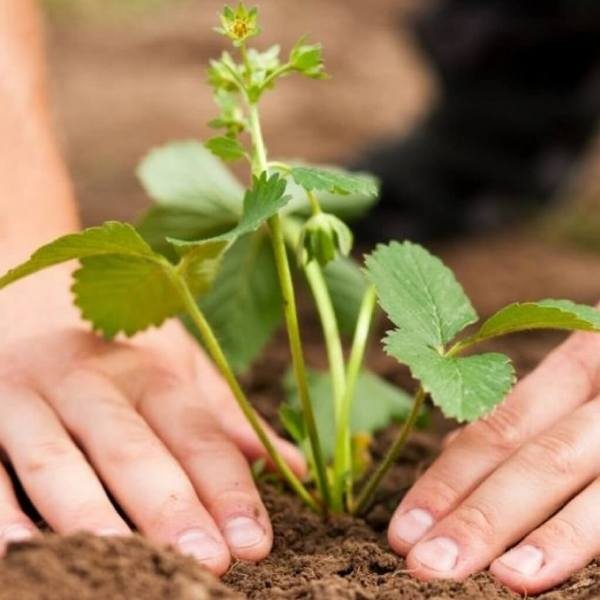

Late varieties
These strawberry varieties can harvest before the first frost. Berries are great for making jams and confiture.
Gigantella
The variety is late ripening with large, flat, blood-red berries. In the context, the berry is dense with a pronounced bright taste and aroma. The bush develops powerful and produces a lot of whiskers. Leaving must be timely. And this: feeding, thinning rows, watering. Failure to comply with agrotechnical conditions leads to a decrease in the yield and quality of berries.
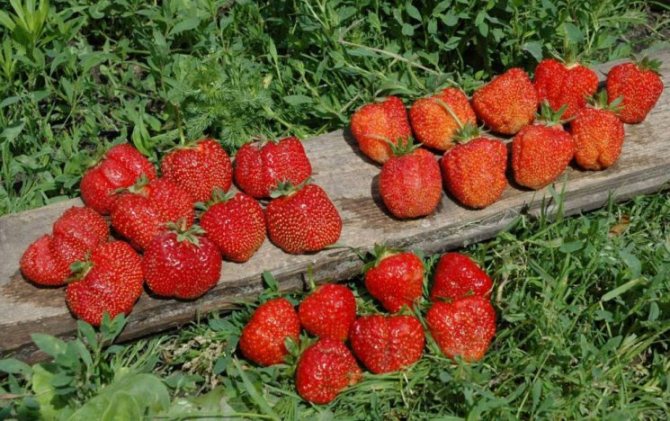

Bohemia
This variety is unpretentious in cultivation.In dry summers, the quality and quantity of the crop does not decrease. The plant thrives on poor loamy soil. The fruits are quite large and dense. This variety is recommended for long-term fresh storage, as well as for winter preparations as jam or jam.
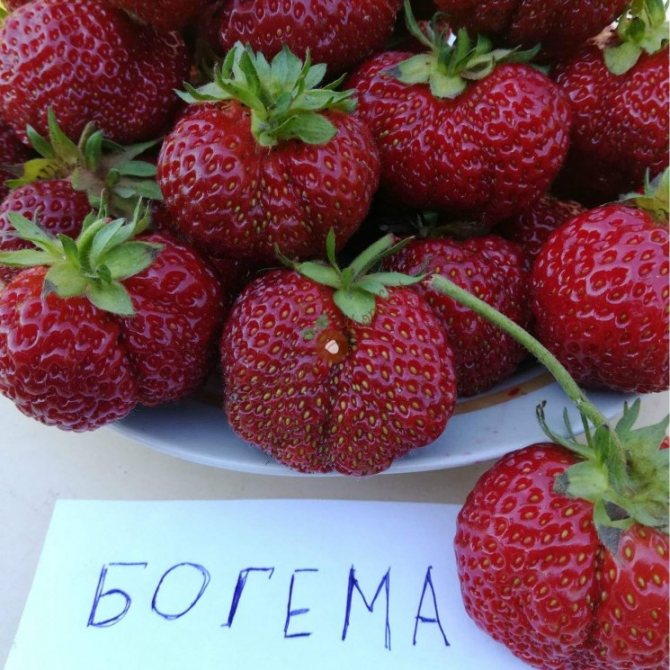

Chamora Turusi
The variety is large-fruited and high-yielding. It can bear fruit until the very cold. You need to water the plant often and thin out. Sprawling bush with numerous peduncles. The first wave of berries can reach up to 100 grams in weight. Then, towards the end of flowering, the berries become smaller. The fruits are sweet and juicy.
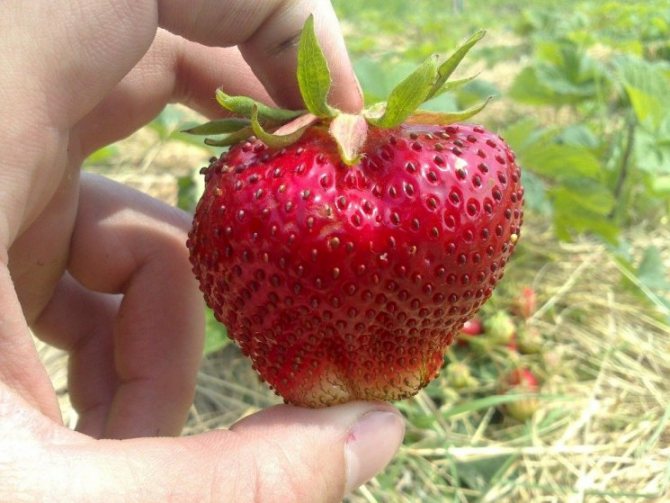

Retired Chelsea
This variety has appeared recently, but has already managed to please many gardeners for its tasty and dense fruits. The bush bears fruit for a long time, provided good watering is ensured. Young seedlings will not yet give a good harvest, but next year, if all conditions are met, they can please with an abundance of tasty and sweet fruits.
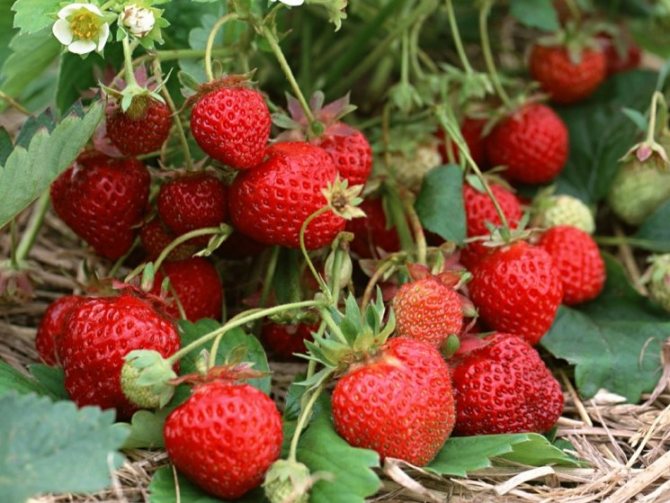

Vima Rina
The bush is quite powerful and spreading. The fruits are large, slightly elongated. The pulp of the berry is juicy, dense with a sweet and sour taste. The plant tolerates dry periods well and easily adapts to changing climatic conditions. Recommended for fresh transportation and long-term storage.
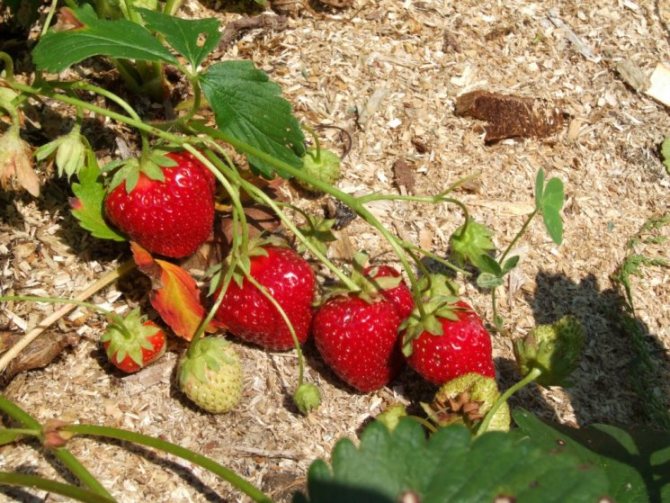

Preparatory work before landing
Growing strawberries in the country begins with preparing the soil, especially if the site has not been cultivated before, and acquiring healthy planting material.
Wireworms and beetle larvae can be a threat to young plantings. One such larva can destroy up to 1 sq. m landing. How to grow strawberries in such soils? First, the land must be treated against pests with ammonia solution or other insecticides. You can pre-plant alkaloid lupine in the garden. Eating its beans, the larvae die.
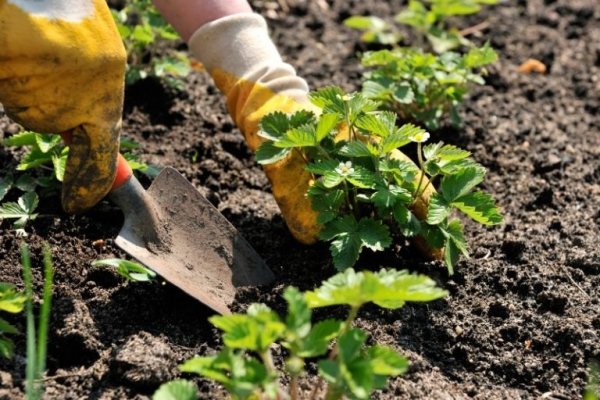

Many summer residents are interested in how to grow strawberries in an area with a close occurrence of groundwater. Where the waters come close, the height of the formed beds should be about 40 cm. In other areas, drier - up to 10 cm, or even the formation of beds can be dispensed with. The standard width of the beds is 1 m.
The designated area is dug up with the introduction of humus or fresh compost into the soil. Then the surface is leveled and lightly rammed.
To obtain high yields when grown outdoors, special attention is paid to planting material. Growing a lot of strawberries will allow seedlings of elite varieties or the first reproduction, sorted and pre-sanitized.
How to choose good seedlings? Signs of quality seedlings:
- shiny leaves of rich green color;
- fibrous root system with processes reaching 7-8 cm;
- the diameter of the root collar is at least 6 mm.
If the cultivation of strawberries in the open field is supposed in the spring from its own seedlings, then at the end of autumn the seedlings are dug up and placed in the cellar. Approximately 5 days before disembarkation, a box with seedlings is taken out and placed in the shade.
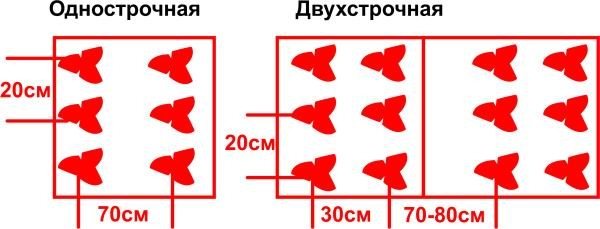

How to propagate strawberries?
Strawberries are propagated mainly by whisker shoots from the desired varieties. You can also use the "mustacheless" method, when young plants are obtained by dividing the bush. It is good for small-fruited varieties that do not have antennae. Did you know that strawberry mustaches are male and female? Yes Yes! We are interested in women. Full-fledged strawberry bushes are obtained from them, which yield berries. And only then the antennae-children. For breeding, I usually take from them the first and second antennae that appear. The third can be both male and female, but the fourth is definitely a “boy”. There will be no berries from him, but he will spread an empty mustache on the garden bed, clogging up the plantings.
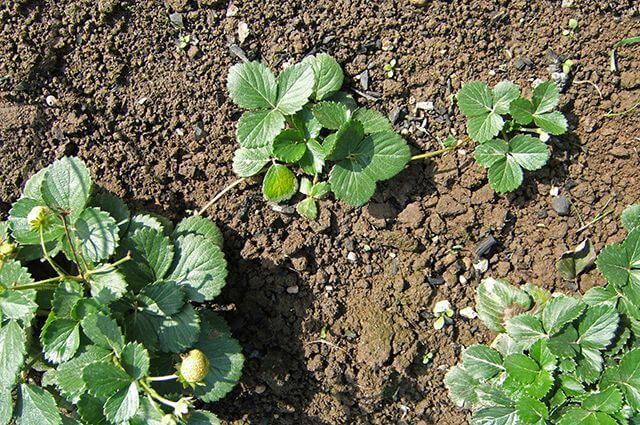

A new hobby has appeared among gardeners - to receive strawberry seedlings by sowing seeds in the winter months. I must say that this is a hopeless business. It is extremely rare to get decent offspring from the seeds of modern large-fruited varieties. But it is worth tinkering with various small-fruited varieties: they completely inherit the characteristics of the mother plants.
Correct fit rules
In the question of how to grow a lot of berries, planting dates play an important role. If they are not followed, most of the plants may die.
Young garden strawberries are planted in early spring or late summer (early autumn) in holes with damp soil. If spring is chosen for planting, then the work must be done as early as the weather permits. For good plant survival, the garden bed can be covered with a film, and with the establishment of a favorable temperature regime, the temporary shelter can be removed.
Novice gardeners are interested in the question of how to properly plant the sockets, and whether there is a standard planting scheme. The planting scheme directly depends on the selected variety. Planting thicker than the recommended planting will result in a smaller berry.
Among the schemes are:
- 1-line,
- 2-line,
- 3-line.
The one-liner is preferable where the growing trees do not allow for large planting space. Cultivation takes place in 1 row, the distance between bushes in a row is 20 cm, and the row spacing should be 70-90 cm.
Two-line scheme (or ribbon): between the plants - 20 cm, between the lines - 30 cm, between the ribbons - up to 70 cm.And the three-line scheme is when 2 rows of plants are planted with an interval of 30 cm on a bed whose width is more than 1 m.
Plants need to be planted so that the roots are lowered vertically down, and the neck of the bush is at ground level.
Too long roots are shortened to 10 cm. Then the soil around the seedlings is compacted and watered abundantly. This removes the voids around the roots of the plant and promotes good survival of the seedlings. From above, the soil is sprinkled with humus or dry earth to retain moisture in it for a longer time.
You already know how to properly fit the sockets. Now a few words about the irrigation regime. At first, the seedlings are watered quite often (the ground should be constantly wet), and then quite regularly, about every 2 days, not allowing the soil to dry out. Watering directly affects the yield of the crop. Many gardeners install a sprinkler or drip irrigation system at their summer cottage.
In order for the strawberry bed to winter well, after the leaves dry up, it is covered with fallen leaves or straw. In the spring, the shelter is removed, and the soil between the plants is loosened.
How to protect strawberries from pests?
Strawberry bushes are often affected by spider mites. You can get rid of it by spraying with soapy water. A lot of trouble is also caused by the wireworm, which gnaws at the roots and leaves. To combat this pest, there is a proven remedy for potato traps. I cut the raw potatoes into thick circles, prick them into thin sticks and bury them in the aisles to a depth of 10 cm. After 3 days, I dig them up and burn them. I do this until I get rid of all the larvae of the pest clean!
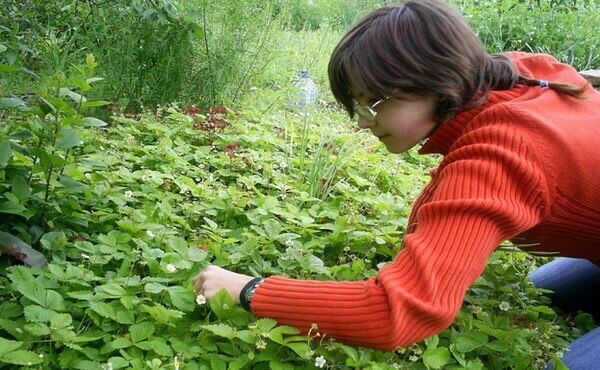

From the beginning of flowering to the onset of frost, there are always flowers and berries on the bushes of strawberries of remontant varieties. Therefore, it is impossible to treat plants for the prevention of diseases and protection from pests with chemicals. During this period, a solution of baking soda (80 g per 1 liter of water), infusions of garlic, mustard, red pepper and horse sorrel help out.
Strawberry care
- Caring for plants comes down to watering, feeding, removing weeds and whiskers, fighting pests and diseases. However, it must be borne in mind that too abundant watering often leads to the spread of gray rot and powdery mildew on strawberries.
- One of the methods of how to grow marketable strawberries is to mulch the soil. When the first ovary appears, it is recommended to mulch the soil with dry straw or sawdust. Then the moisture will last longer, and the weeds will be uncomfortable to grow, but the most important thing is that the berry grows clean and not rotten.
- There is a way to grow weed-free strawberries. Geotextiles, which are very good at allowing moisture and light to pass through, will help in this. The lack of light suppresses the weeds, and the strawberry bushes on the surface of the geotextile receive both light and moisture. The technology of growing with the help of agrofibre consists in making holes in it at a distance of 30 cm from each other and in planting garden strawberries in the made recesses.
- At the beginning of growth, the berry culture needs fertilizing with nitrogen fertilizers and special complex fertilizers. After harvest, the plants should be fed with any complete micronutrient fertilizer.
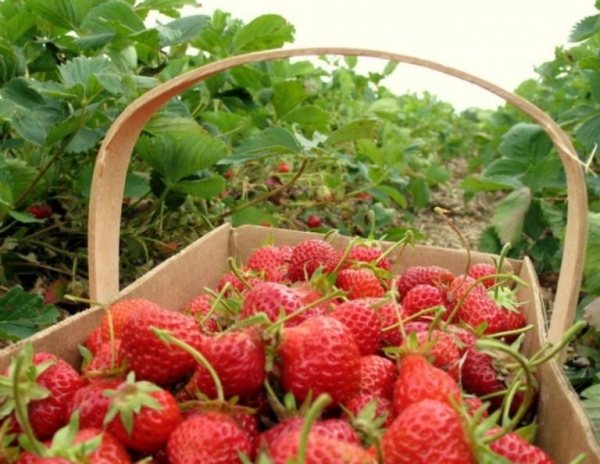

- In case of disease, the plants are treated with a composition with copper oxychloride (at the rate of 1 tbsp. L. Per 10 l of water). It is advisable to carry out the processing in the early stages. It gets rid of rot, powdery mildew and spotting. And Karbofos is effective against pests: 3 tbsp. l. the drug is dissolved in 10 liters of water and the planting is sprayed.
- Every 4 years (some experts call a different figure - 2 years), garden strawberries need to be transplanted to a new place. This is due to the accumulation of various fungi and viruses in the soil. For those who do not know how to grow strawberry seedlings on their own, we will briefly describe this process: choose the most productive and healthy bushes and see which of the released whiskers is the strongest. Then press the first rosettes on these shoots into the ground a little, and cut off the further part of the mustache. These sockets will become a new planting material in the future.
It is not difficult to grow strawberries in the country, but, like any other culture, it requires attention and certain labor costs. And then the harvest will delight you with the abundance and excellent taste of the berries.
Early varieties
Consider early strawberry varieties that are suitable for central Russia. You can enjoy such a berry by the end of May. Such varieties will provide not only an early harvest, but also a harvest in general, especially with a short summer.
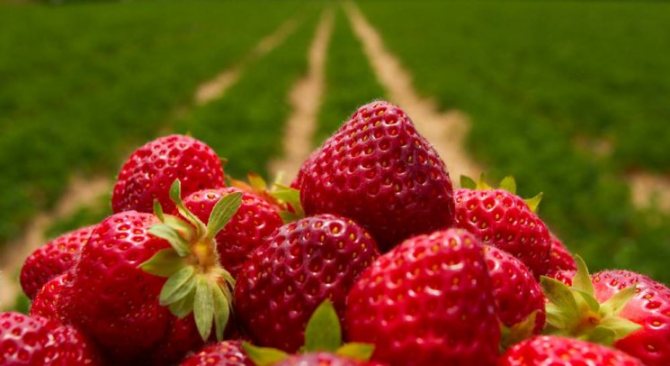

Kokinskaya early strawberry
A high-yielding and frost-resistant variety with a well-developed and powerful bush. The berries are large, conical in shape. The berry is dense, aromatic with a bright taste. Suitable for long-term storage and transportation. Subject to the agrotechnical growing conditions, you can collect up to 2 kg of berries from 1 sq. meters.
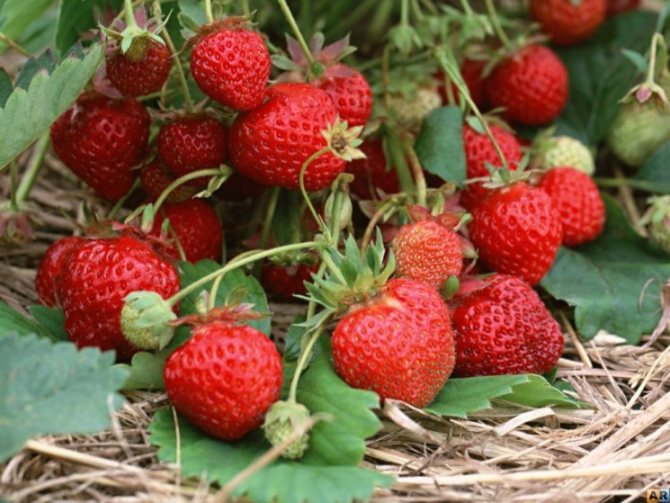

Kimberly
The variety is large-fruited with a dense consistency. The berry is stored for a long time, which makes it easy to transport. Differs in good taste and belongs to the sweet varieties of strawberries.
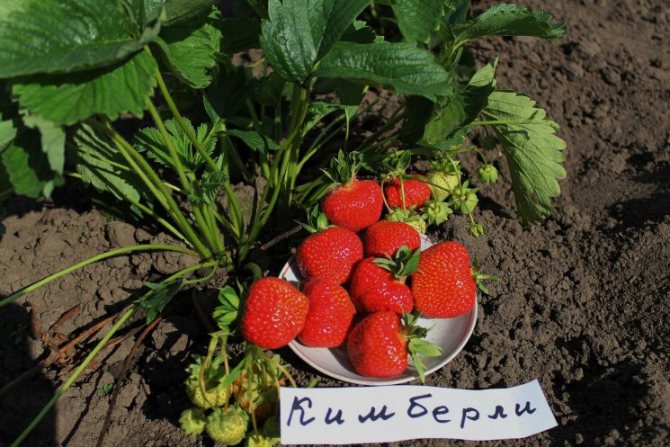

Strawberry Festival Chamomile
One of the earliest high-yielding varieties. The berries are large, dense, rounded. They can reach a mass of up to 50 grams. Because of its characteristics, it has become a favorite of many summer residents.
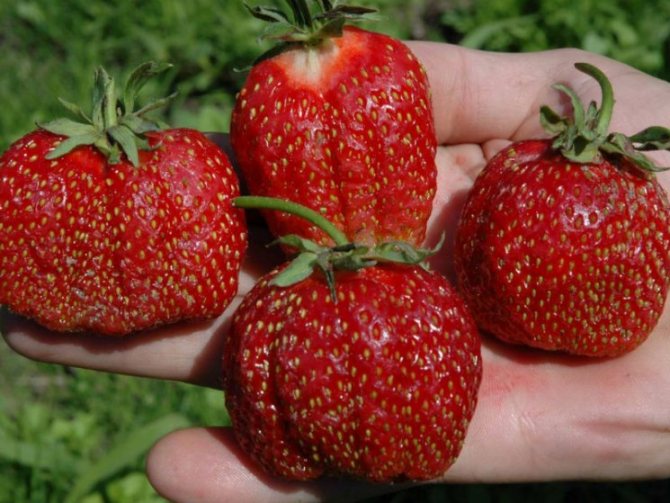

Kent
A distinctive feature of the variety is its resistance to external temperature changes. In addition, the plant is less susceptible to various diseases, such as: mealy rash, gray mold and verticillosis. The fruits are large, juicy and fragrant. The berries can be stored for a long time and easily transported.
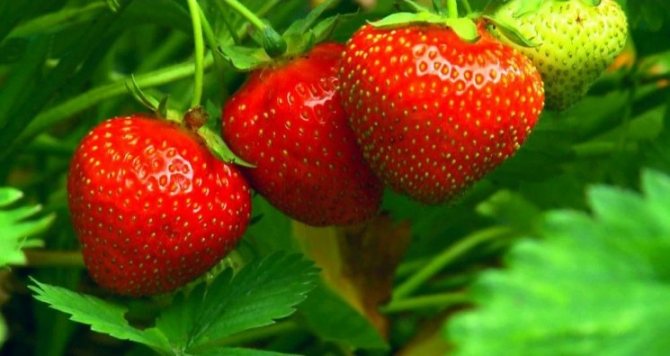

Vima Zanta
This is the most unpretentious strawberry variety. Withstands harsh climatic conditions, and does not need additional shelter. The plant is resistant to diseases. The berry is delicious, juicy and beautiful. Suitable for workpieces.
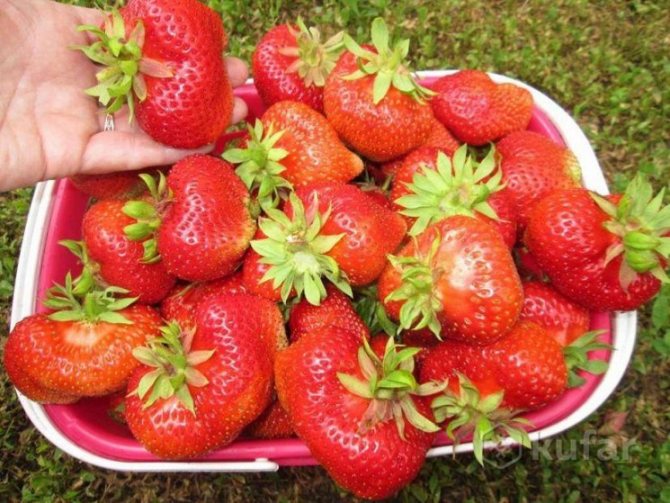

Gallery: strawberries in the open field (15 photos)
Characteristics of the berry
A close relative of homemade strawberries, as shown in the photo, is strawberry.It is a perennial herb with a straight, pubescent stem.
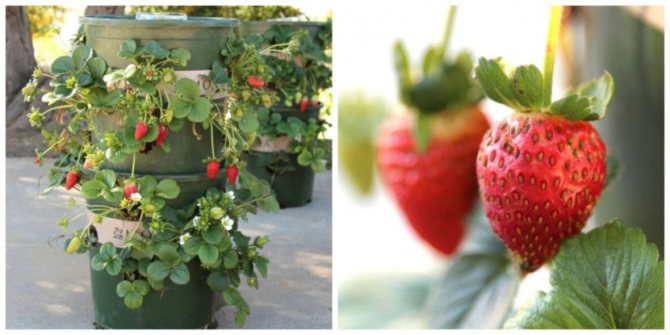

The leaf surfaces are pubescent. Peduncles on the plant mustache (long creeping shoots) and horns (short annual shoots).
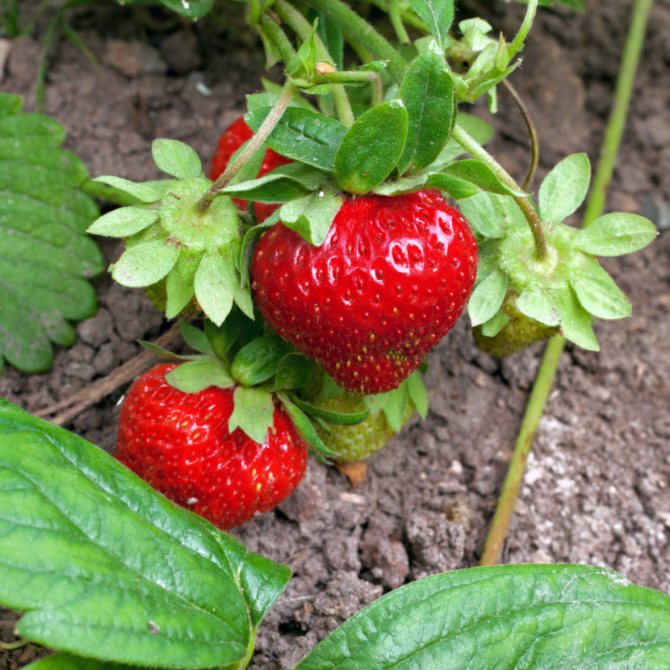

The yield of strawberries depends on the number of annual shoots and the number of peduncles. Flowers are collected in a scutellum. Their number can reach 12 pieces. Flowering can last for a month.
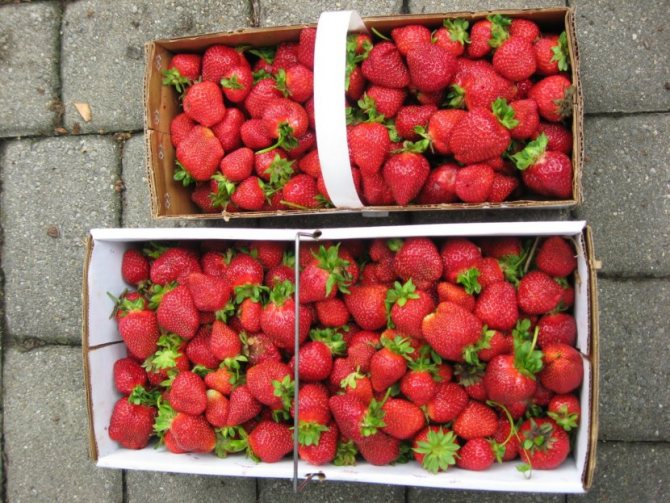

Choosing the time
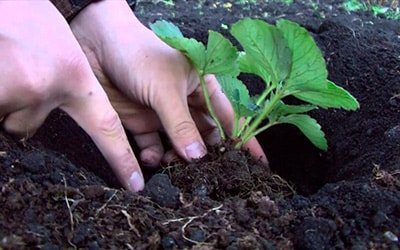

Usually, strawberry bushes begin to be planted in spring or fall.
Spring planting will vary by region. When the temperature has reached 10-15 degrees Celsius, summer residents are engaged in seedlings.
For example, for residents of Siberia, strawberries should be planted in the second half of May, and for residents of southern regions - at the end of April. Autumn planting begins in late summer and ends in late October. And as experienced gardeners advise, spring planting is considered optimal than autumn planting.
For those summer residents who live in areas with little snow, it is best to plant strawberries in the spring. The main thing is that there is more light for her, and there are no drafts.
According to gardeners, the optimal planting time is evening or another cloudy day.
Selection of planting material
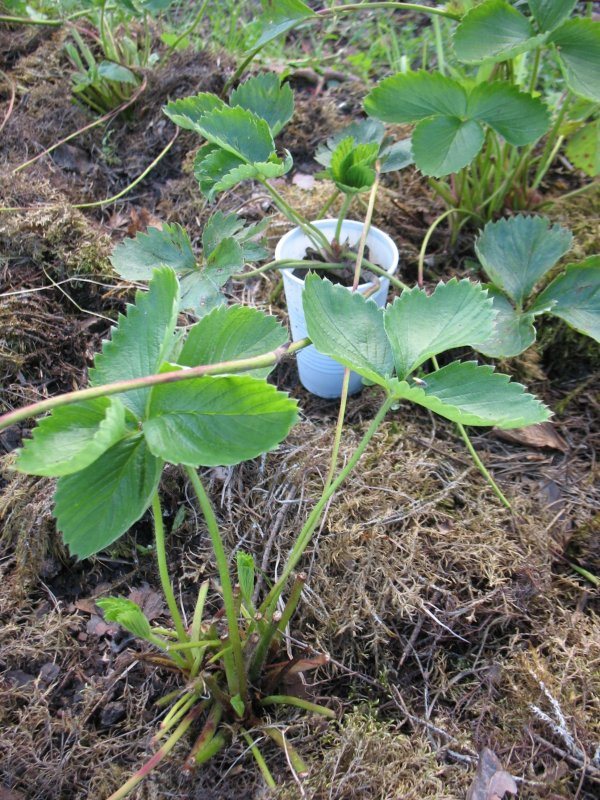

The strawberry whiskers are either retained for propagation or trimmed.
Strawberries multiply intensively. If at first this pleases the gardener, then further it is necessary to remove the mustache in a timely manner, if varieties with intensive formation are preferred.
The mustache is trimmed with scissors or a sickle and discarded if there is no need for additional planting material.
If seedlings are needed, then the mustache takes root. The first two rosettes on the mustache are considered the best material, the rest are removed.
To grow quality planting material it is necessary to ensure that rooting takes place in loose soil, moist soil and with constant pouring of fresh compost or humus... By autumn, the strawberry seedlings will be ready to be transplanted to a new location.
Autumn preparation for winter
Autumn preparation involves the removal of everything that may prevent the bush from overwintering normally and bearing fruit with renewed vigor starting from the new season. This means that it is necessary to remove any mustache that is not rooted, as well as damaged, reddened and weak leaves.
In addition, in harsh winters, any strawberries must be covered. It is better to choose a material with a density of about 60 grams per square meter. For these purposes, agrofibre, spunbond or any other material is suitable.
They also use mulch, needles, leaves or grass to hide strawberries. Although this method turns out to be more economical than buying fiber, it has several disadvantages. In this case, mice can start up in the shelter, which are enemies of the strawberry. They damage shoots and dig tunnels.
When covering a strawberry plantation, it is better to opt for special covering materials or on a dense plastic wrap.
Spring cleaning
With the onset of the first warm days, the soil begins to warm up rapidly, and the green rosette of strawberries starts to grow. It is necessary to hurry and remove old foliage, mustaches and weeds from the row spacings.
If the aisles have not been dug up since the fall, this can be done in the spring, but it is better that the wintering forms of pathogens and pests do not have time to come to the surface. If digging is not planned, then it is simply necessary to loosen the earth that has caked after winter.
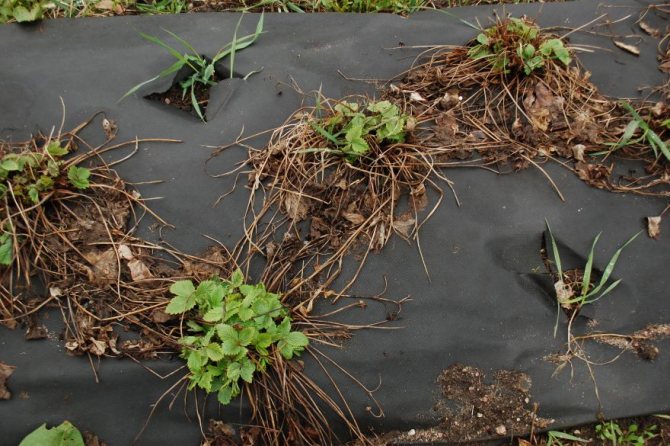

In spring, old leaves are cut off from strawberries.
Spring feeding
Spring, the time of intensive regrowth of the vegetative mass. To do this, strawberries need fast-acting nutrients, so you need to use nitrogenous mineral supplements.
It is better to take ammonium nitrate or urea as a fertilizer. Dissolve 2 tbsp in a bucket of water. spoons and pour 200-350 ml under each bush. The first top dressing should be done in early spring, immediately after sanitary cleaning. The second nitrogenous fertilizing is carried out at the moment the peduncle extends, with the same fertilizers and in the same dose.
Manure solutions show themselves well as spring feeding. For this, pork, cow or horse manure is poured with water at the rate of 1:10, and chicken droppings are 1:20. For each bush, you can safely add 200-250 ml.
"Foliar" dressing
If strawberries are planted on sandy soils, then the leaching of nutrients is more intensive, so there is a need to carry out foliar feeding.
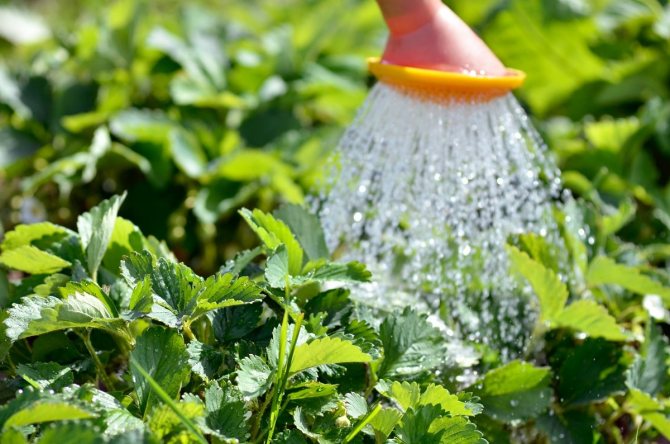

Foliar dressing is carried out before the berries ripen.
In a bucket of water, dissolve 1 tablespoon of ammonium nitrate, 2-3 g of crystalline boric acid and 3-4 drops of alcohol tincture of 5% iodine, mix everything and process strawberries on a leaf from a spray bottle.
Purchase of planting material
You need to take care of the purchase in advance. In order for strawberries to please as long as possible, it is better to give preference to varieties with different ripening periods in equal parts. Early, medium, late strawberries will make the conveyor of berries to your table a long time.
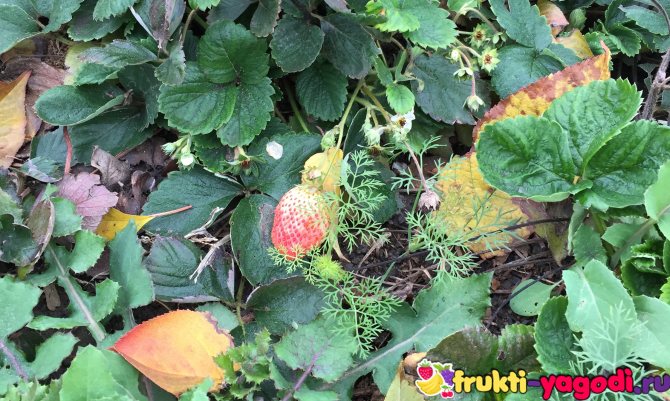

If you want to have strawberries from spring to late autumn, then you cannot do without remontant varieties.
When purchasing seedlings, carefully examine them; if the color of leaves, rosettes or roots is suspicious, it is better to refuse to purchase.
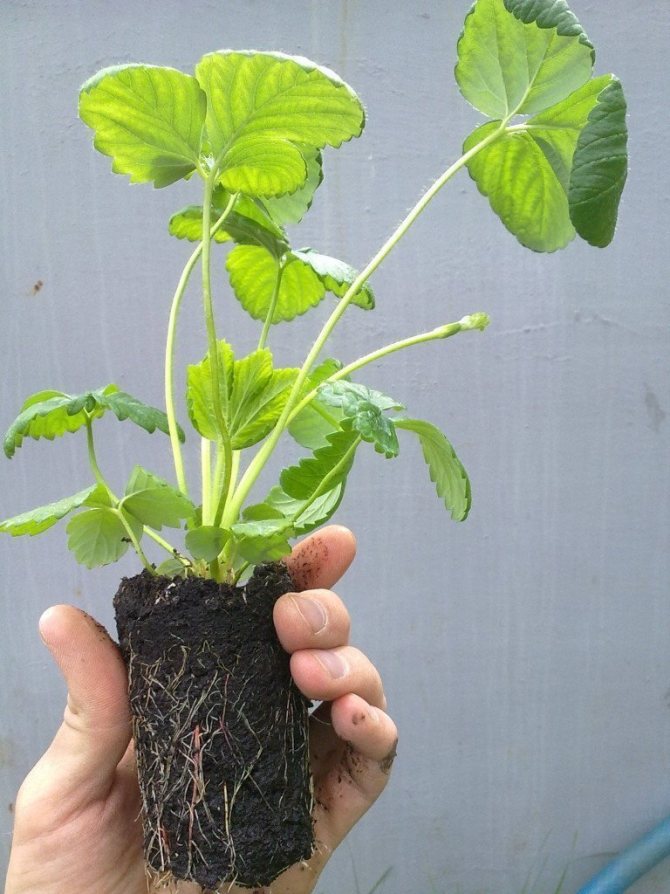

Inspect your strawberry seedling carefully before purchasing.
Buying planting material in breeding nurseries and specialized points of sale, you can be more confident in the quality of seedlings and compliance with the variety.
When choosing a variety, give preference to zoned strawberries, the one that responds well to your natural conditions.
Preparing the soil
Strawberries can be grown in areas with medium loam. If there is groundwater in the garden area, then the plants are planted in high beds. Sandy soil will be the worst for strawberry growth.
- Strawberry cultivation should be carried out as follows: autumn digging of the soil, which cannot be neglected. With the onset of spring, the beds need to be loosened with a shovel or pitchfork by 30-40 cm (This is the depth required by the root system). If there is loam on the site, sand, peat or sawdust should be added to the garden bed. This increases the fertility of the soil.
Reference! It is best to plant strawberries higher so that groundwater does not reach it. Bushes do not need stagnant moisture, otherwise the root system will simply rot. If the composition of the soil is different, then it is imperative to make a drainage system from rubble or other material.
- Spring weeding is needed to prevent weeds from clogging the plant. After weeding, it is better to cover the bed with dark material or film. After a week, you can remove the film, and remove the emerging seedlings with a cultivator.
Reference! In the spring, experienced gardeners put mulch in the strawberry garden, which prevents weeds from growing.


The next step when planting strawberries in the garden will be watering... It takes place in two stages: a week before planting and during planting. Then you need to water the garden in connection with the weather conditions and the climate of the region where the strawberries grow. In hot weather, watering will have to be done more often.- Fertilization is an important factor when planting a plant in a garden bed. You need to work with fertilizers gradually so that the strawberries do not immediately take in a large amount of nutrients. This will lead to the fact that the bushes will grow, and the berries will be small. Usually, the soil is fertilized with rotted manure, fatty compost or minerals.In the latter case, chemistry is indispensable. You can also add dolomite flour, but this is necessary if the soil is acidic. Experienced gardeners often substitute ash for flour, which will be more beneficial.
Important! Fertilizers are best applied in autumn or early spring.
- You can disinfect strawberries with fungicides, although gardeners respect potassium permanganate solution more. For example, a phytosporin solution will introduce beneficial microorganisms into the soil, which in turn will improve plant growth.
All of the above procedures are best done no later than two weeks before planting strawberries.
Growing methods
There are the following types of planting strawberries - under the film or outdoors.
When growing strawberries under a film, the problem of weeds and berry rotting disappears
The soil is covered with a film, slots are made where seedlings or seeds are planted. The film will have a positive effect on the plant and protect ripe berries from contact with the ground. So the berries will be protected from rotting. In addition, the film will protect the bushes from weed germination. The film material should be dug into the ground from all sides of the future bed.
Which to choose?
You can grow strawberries in several ways at once. Each of the methods has its own disadvantages and advantages. A more modern technology, loved by gardeners, is the use of film material.
Features of culture
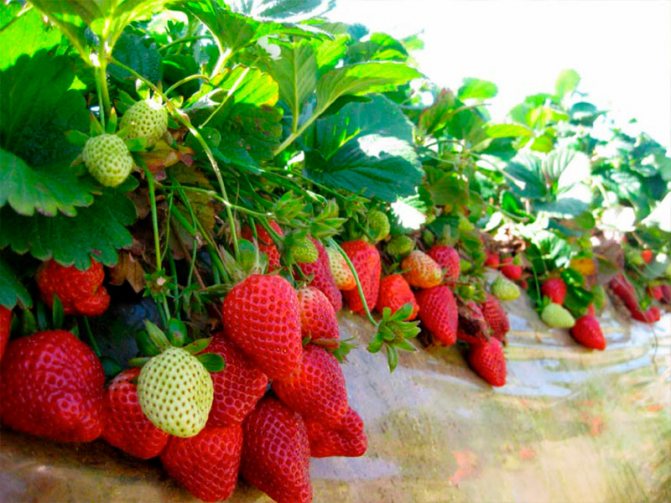

Even experienced gardeners do not fully understand what the term "remontant" means. Let's try to figure it out together. The formation of fruit buds in garden strawberries, which are often called strawberries or victoria, depends on the length of daylight hours. Most gardeners grow short-day strawberries in the country, the berries of which ripen at the end of May or June. Fruiting is single, buds are laid in autumn.
A feature of most remontant varieties is a neutral attitude to the length of daylight hours, budding every 7-8 weeks. The difference with ordinary varieties is significant, since in neutrals, ripening occurs either in waves or constantly, without interruption, until autumn.
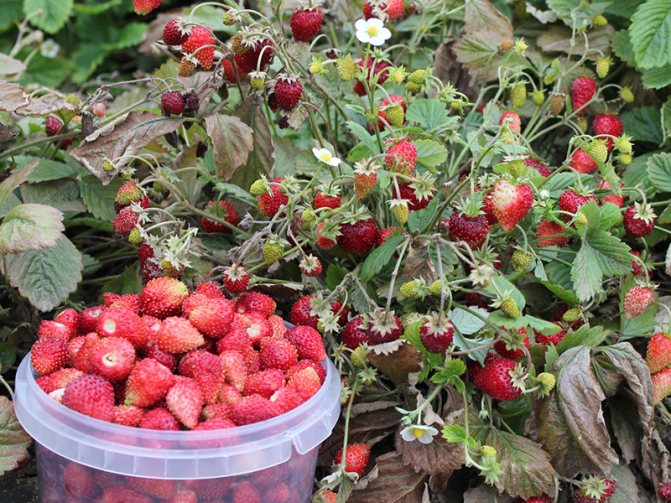

On a note! A more accurate definition of the characteristics of remontability will be not repeated, but continuous fruiting of the culture. Therefore, the so-called neutrals according to the classification are included in the group of remontant varieties.
In the group of hybrid and varietal remontant forms - garden strawberries of domestic and foreign selection (Dutch, Italian, German, Polish, American). Large-fruited varieties are popular, ampelous small-fruited, distinguished by their yield and excellent aroma. But a rich harvest, and even more so a continuous one, is possible only with the observance of agricultural technology. Cultivation and care are laborious, since plants that are undemanding to the length of daylight hours need adequate nutrition and regular watering.
Reviews about the repairmen are contradictory, but most often it turns out that the unsuccessful results are associated with a violation of agrotechnical rules, the lack of disease prevention.
Frequently asked questions
Among summer residents, there are often questions to which they are looking for answers. Among such questions are the following:
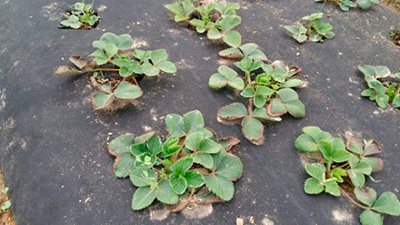

What should be the soil? Since strawberries grow well in black soil, light gray and turfy soil will be less optimal for strawberry growth. You can add sand, dig up the bed and make it loose. In acidic soil, the plant will not grow.- Can plants grow close to each other? If the site is small and you want to plant a lot of horticultural crops, planting nearby plants will have a bad effect on their growth. In addition, there will be a lack of light for certain plants. Better to reduce your impulse and plant only the crops you need.
- What happens if you apply a lot of fertilizer? When a large amount of fertilizer is used, plants grow rapidly and fruit growth is reduced.And the presence of nitrogen in fertilizers can lead to the combustion of the root system. Moderate fertilization is the best option.

